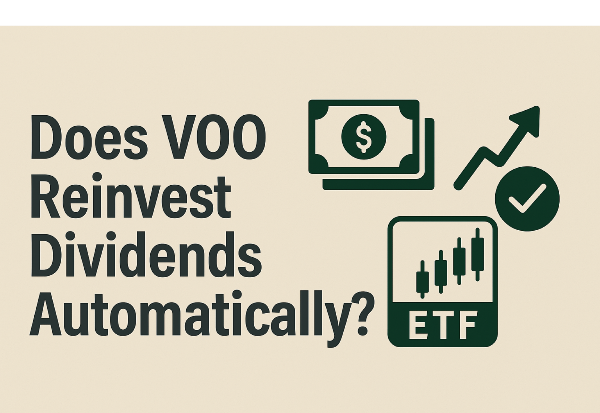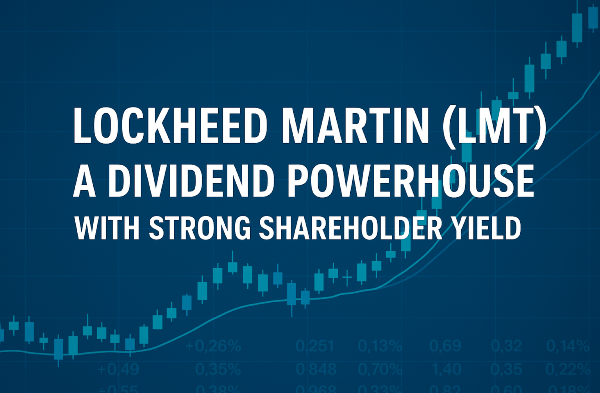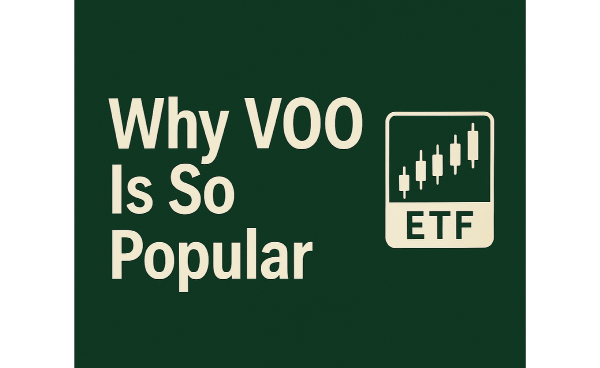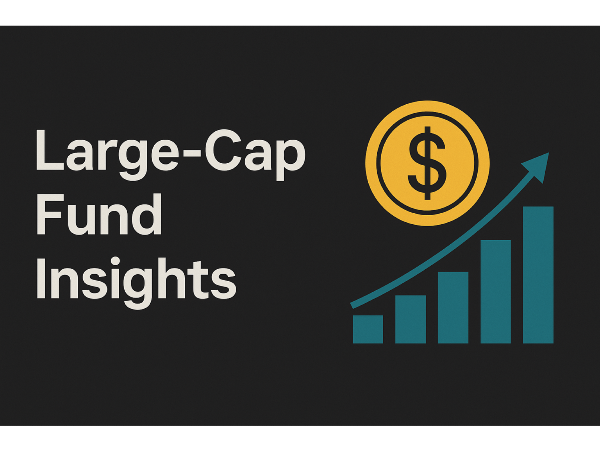Discover how investing in large-cap dividend-paying companies can offer consistent income, reduced volatility, and long-term growth.
Why Dividend Stocks Are a Smart Long-Term Investment
Dividends are regular payments made by companies to their shareholders, typically drawn from profits. They offer investors a consistent income stream in addition to any gains from stock price appreciation. For long-term investors, dividend-paying stocks represent a practical strategy for compounding wealth, especially when dividends are reinvested. Among the most attractive options are large-cap stocks—well-established companies with a proven track record of performance and financial stability. These firms often lead their industries and possess the cash flow strength to sustain and grow their dividend payouts over time. This combination of reliability, income, and potential capital appreciation makes large-cap dividend investing an appealing approach for those seeking to build wealth while minimizing risk. As market volatility persists, more investors are turning to these stable giants for both income and peace of mind.
How the Large Cap Dividend Strategy Builds Reliable Income and Long-Term Growth
These firms, often referred to as blue-chip stocks, are typically leaders in their industries and trade on major exchanges like the NYSE or NASDAQ. The strategy emphasizes selecting companies with a strong history of dividend payments, sustainable payout ratios, and the ability to grow dividends over time. Companies like Johnson & Johnson JNJ and Procter & Gamble PG exemplify the core of this strategy. Both maintain robust balance sheets, generate consistent cash flow, and have increased dividends for decades. These attributes make them ideal candidates for long-term portfolios focused on dividend yield and growth.
To deepen your understanding, the Dividend Talk podcast offers valuable insights. In a recent episode, hosts Derek and Edgi explored how dividend growth investing can outperform during volatile markets. “Dividend growth is not just about income—it’s about resilience,” they noted at 18:42 🕒. They also discussed the importance of reinvestment strategies and sector diversification at 33:10 🕒.
Another excellent resource is The Dividend Cafe, hosted by David L. Bahnsen. In a recent episode, Bahnsen broke down the philosophical underpinnings of dividend investing, emphasizing that “dividends are the clearest signal of a company’s financial discipline” at 12:05 🕒. He also highlighted how rising dividends can help offset inflationary pressures, especially in retirement-focused portfolios, at 27:18 🕒. These podcasts not only reinforce the strategy’s fundamentals but also provide actionable insights for building a resilient income-generating portfolio.
Sources:
Why Large Cap Dividend Stocks Offer Stability and Steady Returns
These companies, often household names like Coca-Cola KO or PepsiCo PEP, distribute a portion of their profits regularly, offering predictable cash flow regardless of market conditions. Compared to small-cap or high-growth stocks, large-cap dividend stocks tend to exhibit lower volatility. Their size, market dominance, and established revenue streams help cushion against economic shocks. This makes them ideal for conservative investors seeking capital preservation alongside income. Moreover, reinvesting dividends through DRIPs (Dividend Reinvestment Plans) can significantly enhance long-term returns.
For deeper insights, the Simply Investing Dividend Podcast recently explored this compounding effect. In Episode 42, the host explained, “Reinvesting dividends is like planting seeds that grow into trees—each one bearing more fruit over time,” at 14:27 🕒. He also discussed how dividend-paying stocks outperformed during downturns at 29:10 🕒. Another valuable listen is The Dividend Mailbox®, where the latest episode broke down tax advantages of qualified dividends in the U.S. “In many cases, your dividend income is taxed at a lower rate than your salary,” the host noted at 11:03 🕒, with a follow-up on tax-efficient account placement at 22:45 🕒.
Sources:
Top Metrics to Identify High-Quality Dividend Stocks
An unusually high yield can signal underlying issues, such as a declining stock price or unsustainable payouts. That’s where the payout ratio comes in—it measures the percentage of earnings paid out as dividends. A healthy range typically falls between 30% and 60%, indicating the company retains enough earnings to reinvest in growth while rewarding shareholders. Companies that consistently raise dividends, like McDonald’s MCD or Microsoft MSFT, demonstrate financial strength and a commitment to shareholder value. Free cash flow is equally important—it reflects the actual cash available after capital expenditures, ensuring the company can sustain and grow its dividend.
For a deeper dive, check out The Passive Income Blueprint. In a recent 7-minute episode, the host broke down how to assess dividend yield and payout ratios, noting at 3:12 🕒, “A high yield without earnings support is a red flag, not a bargain.” At 5:40 🕒, they emphasized the importance of ROE in gauging management efficiency. Another great listen is The Infinite Income Podcast, where the host explained how free cash flow supports dividend growth. “Cash flow is the lifeblood of dividends,” they said at 6:25 🕒, followed by a breakdown of dividend traps at 9:10 🕒.
Sources:
Building a Resilient Large Cap Dividend Portfolio from the Ground Up
Creating a strong large cap dividend portfolio starts with diversification. Spreading investments across sectors—such as healthcare, consumer staples, energy, and financials—helps reduce risk and smooth out returns. For example, combining stocks like Johnson & Johnson JNJ, Chevron CVX, and JPMorgan Chase JPM can provide exposure to different economic cycles while maintaining dividend reliability. Rebalancing the portfolio periodically ensures that no single sector or stock becomes disproportionately weighted, while also allowing investors to monitor dividend sustainability and adjust holdings.
Exchange-traded funds (ETFs) and mutual funds offer a convenient way to gain diversified exposure to dividend-paying large caps. Funds like the Schwab U.S. Dividend Equity ETF (SCHD) or Vanguard Dividend Appreciation ETF (VIG) bundle high-quality dividend stocks into a single investment, reducing the need for constant oversight. These funds often screen for dividend growth, financial health, and sector balance, making them ideal for passive investors. Additionally, enrolling in DRIPs (Dividend Reinvestment Plans) allows dividends to be automatically reinvested into additional shares.
For a practical walkthrough, Steve | Call to Leap offers a 31-minute masterclass on building a $40K dividend-paying portfolio. At 5:59 🕒, he breaks down SCHD’s holdings and yield, and at 23:50 🕒, he compares DRIP vs self-reinvestment strategies. Another great resource is 9 to 5 Investor, who explains the importance of sector diversification at 2:01 🕒 and how to align investments with long-term goals at 7:40 🕒.
Sources:
Hidden Risks of Large Cap Dividend Investing You Shouldn’t Ignore
One of the most pressing concerns is the potential for dividend cuts. Even well-established companies can face earnings pressure, regulatory changes, or industry disruptions that force them to reduce or suspend dividends. For instance, General Electric GE famously slashed its dividend during restructuring, reminding investors that no payout is guaranteed. Rising inflation can erode the real value of dividend income, while higher interest rates may make bonds and savings accounts more attractive, drawing capital away from dividend stocks. This can lead to price declines, especially in sectors like utilities and real estate, which are heavily leveraged and sensitive to borrowing costs.
To explore these nuances, The Tom Dupree Show recently tackled the impact of interest rate hikes on dividend-paying stocks. At 16:40 🕒, Tom noted, “When rates rise, dividend stocks can lose their shine—especially those with slow growth.” He also discussed sector-specific vulnerabilities at 28:15 🕒. Meanwhile, KeyStone’s Stock Talk offered a candid breakdown of dividend traps in Episode 112. “A high yield can be a warning sign, not a reward,” said host Ryan Irvine at 9:03 🕒, followed by a case study on overexposure to utilities at 14:22 🕒.
Sources:
Real-World Portfolios That Prove the Power of Dividend Investing
A well-constructed large cap dividend portfolio often includes companies with decades-long histories of consistent payouts. For example, a sample portfolio might feature stalwarts like Johnson & Johnson JNJ, PepsiCo PEP, and Procter & Gamble PG. These firms not only offer reliable dividends but also demonstrate strong fundamentals and global brand dominance.
In fact, the Dividend Talk podcast recently analyzed a 10-year backtest of a dividend growth portfolio versus the S&P 500. At 21:18 🕒, the hosts noted, “The dividend portfolio lagged slightly in bull markets but outperformed during corrections, thanks to steady income and lower drawdowns.” They also highlighted the role of consumer staples and healthcare in stabilizing returns at 34:02 🕒. Meanwhile, The Dividend Corner podcast featured a case study on a retiree’s portfolio yielding 3.8% annually. At 12:45 🕒, the host emphasized, “It’s not just about yield—it’s about sustainability and growth,” followed by a breakdown of sector allocation at 19:30 🕒.
Sources:
Conclusion
The large cap dividend strategy stands out as a disciplined and resilient path for building long-term wealth. By focusing on financially sound, dividend-paying giants across diverse sectors, investors can benefit from consistent income, reduced volatility, and the compounding power of reinvestment. Thoughtfully constructed portfolios—whether through individual stocks or ETFs—can weather market cycles while generating reliable returns. However, understanding key financial metrics and recognizing sector-specific risks remain essential for sustained success. With the right balance of growth, income, and risk management, large cap dividend investing offers both peace of mind and solid potential for financial independence.
🎧 Podcast Transcripts
1. Motley Fool Wealth Management – U.S. Large Cap Dividend
This episode explores how large-cap dividend strategies can deliver consistent income and long-term capital appreciation. The discussion emphasizes selecting quality businesses with strong cash flows and a disciplined capital return philosophy.
Transcript Excerpt:
“We focus on companies that not only pay dividends but also demonstrate a commitment to shareholder returns through buybacks and sustainable growth.”
2. The Motley Fool – Build Wealth With Dividends
This episode outlines how young investors can start building a dividend portfolio with as little as $100 per month. It highlights the role of ETFs and individual dividend stocks in creating a diversified, income-generating portfolio.
Transcript Excerpt:
“Dividend investing isn’t just for retirees. With time and consistency, it can be a powerful tool for financial independence.”
3. Dollarscaler – High Dividend Yield Strategies
This podcast dives into the mechanics of high-yield dividend investing, including how to avoid yield traps and balance income with capital preservation.
Transcript Excerpt:
“A high dividend yield is only valuable if it’s sustainable. That’s why we look at payout ratios, earnings stability, and industry trends.”
📌Read More About:
Top Large-Cap Stocks- https://stockbossup.com/pages/topics/large-cap
What Are Large US Cap Stocks?- https://stockbossup.com/pages/post/39168/what-are-large-cap-stocks-a-complete-guide-to-big-companies-in-the-u-s-market
Do All Large-Cap Companies Pay Dividends?- https://stockbossup.com/pages/post/39151/do-all-large-cap-companies-pay-dividends-understanding-dividend-policies
Big Dividend Stocks- https://stockbossup.com/pages/post/39152/best-big-dividend-stocks-for-high-yield-returns
10 Best Large-Cap Dividend Stocks for Reliable Income and Growth in 2025- https://stockbossup.com/pages/post/39232/10-best-large-cap-dividend-stocks-for-reliable-income-and-growth-in-2025






























Discover how investing in large-cap dividend-paying companies can offer consistent income, reduced volatility, and long-term growth.
Why Dividend Stocks Are a Smart Long-Term Investment
Dividends are regular payments made by companies to their shareholders, typically drawn from profits. They offer investors a consistent income stream in addition to any gains from stock price appreciation. For long-term investors, dividend-paying stocks represent a practical strategy for compounding wealth, especially when dividends are reinvested. Among the most attractive options are large-cap stocks—well-established companies with a proven track record of performance and financial stability. These firms often lead their industries and possess the cash flow strength to sustain and grow their dividend payouts over time. This combination of reliability, income, and potential capital appreciation makes large-cap dividend investing an appealing approach for those seeking to build wealth while minimizing risk. As market volatility persists, more investors are turning to these stable giants for both income and peace of mind.
How the Large Cap Dividend Strategy Builds Reliable Income and Long-Term Growth
These firms, often referred to as blue-chip stocks, are typically leaders in their industries and trade on major exchanges like the NYSE or NASDAQ. The strategy emphasizes selecting companies with a strong history of dividend payments, sustainable payout ratios, and the ability to grow dividends over time. Companies like Johnson & Johnson JNJ and Procter & Gamble PG exemplify the core of this strategy. Both maintain robust balance sheets, generate consistent cash flow, and have increased dividends for decades. These attributes make them ideal candidates for long-term portfolios focused on dividend yield and growth.
To deepen your understanding, the Dividend Talk podcast offers valuable insights. In a recent episode, hosts Derek and Edgi explored how dividend growth investing can outperform during volatile markets. “Dividend growth is not just about income—it’s about resilience,” they noted at 18:42 🕒. They also discussed the importance of reinvestment strategies and sector diversification at 33:10 🕒.
Another excellent resource is The Dividend Cafe, hosted by David L. Bahnsen. In a recent episode, Bahnsen broke down the philosophical underpinnings of dividend investing, emphasizing that “dividends are the clearest signal of a company’s financial discipline” at 12:05 🕒. He also highlighted how rising dividends can help offset inflationary pressures, especially in retirement-focused portfolios, at 27:18 🕒. These podcasts not only reinforce the strategy’s fundamentals but also provide actionable insights for building a resilient income-generating portfolio.
Sources:
Why Large Cap Dividend Stocks Offer Stability and Steady Returns
These companies, often household names like Coca-Cola KO or PepsiCo PEP, distribute a portion of their profits regularly, offering predictable cash flow regardless of market conditions. Compared to small-cap or high-growth stocks, large-cap dividend stocks tend to exhibit lower volatility. Their size, market dominance, and established revenue streams help cushion against economic shocks. This makes them ideal for conservative investors seeking capital preservation alongside income. Moreover, reinvesting dividends through DRIPs (Dividend Reinvestment Plans) can significantly enhance long-term returns.
For deeper insights, the Simply Investing Dividend Podcast recently explored this compounding effect. In Episode 42, the host explained, “Reinvesting dividends is like planting seeds that grow into trees—each one bearing more fruit over time,” at 14:27 🕒. He also discussed how dividend-paying stocks outperformed during downturns at 29:10 🕒. Another valuable listen is The Dividend Mailbox®, where the latest episode broke down tax advantages of qualified dividends in the U.S. “In many cases, your dividend income is taxed at a lower rate than your salary,” the host noted at 11:03 🕒, with a follow-up on tax-efficient account placement at 22:45 🕒.
Sources:
Top Metrics to Identify High-Quality Dividend Stocks
An unusually high yield can signal underlying issues, such as a declining stock price or unsustainable payouts. That’s where the payout ratio comes in—it measures the percentage of earnings paid out as dividends. A healthy range typically falls between 30% and 60%, indicating the company retains enough earnings to reinvest in growth while rewarding shareholders. Companies that consistently raise dividends, like McDonald’s MCD or Microsoft MSFT, demonstrate financial strength and a commitment to shareholder value. Free cash flow is equally important—it reflects the actual cash available after capital expenditures, ensuring the company can sustain and grow its dividend.
For a deeper dive, check out The Passive Income Blueprint. In a recent 7-minute episode, the host broke down how to assess dividend yield and payout ratios, noting at 3:12 🕒, “A high yield without earnings support is a red flag, not a bargain.” At 5:40 🕒, they emphasized the importance of ROE in gauging management efficiency. Another great listen is The Infinite Income Podcast, where the host explained how free cash flow supports dividend growth. “Cash flow is the lifeblood of dividends,” they said at 6:25 🕒, followed by a breakdown of dividend traps at 9:10 🕒.
Sources:
Building a Resilient Large Cap Dividend Portfolio from the Ground Up
Creating a strong large cap dividend portfolio starts with diversification. Spreading investments across sectors—such as healthcare, consumer staples, energy, and financials—helps reduce risk and smooth out returns. For example, combining stocks like Johnson & Johnson JNJ, Chevron CVX, and JPMorgan Chase JPM can provide exposure to different economic cycles while maintaining dividend reliability. Rebalancing the portfolio periodically ensures that no single sector or stock becomes disproportionately weighted, while also allowing investors to monitor dividend sustainability and adjust holdings.
Exchange-traded funds (ETFs) and mutual funds offer a convenient way to gain diversified exposure to dividend-paying large caps. Funds like the Schwab U.S. Dividend Equity ETF (SCHD) or Vanguard Dividend Appreciation ETF (VIG) bundle high-quality dividend stocks into a single investment, reducing the need for constant oversight. These funds often screen for dividend growth, financial health, and sector balance, making them ideal for passive investors. Additionally, enrolling in DRIPs (Dividend Reinvestment Plans) allows dividends to be automatically reinvested into additional shares.
For a practical walkthrough, Steve | Call to Leap offers a 31-minute masterclass on building a $40K dividend-paying portfolio. At 5:59 🕒, he breaks down SCHD’s holdings and yield, and at 23:50 🕒, he compares DRIP vs self-reinvestment strategies. Another great resource is 9 to 5 Investor, who explains the importance of sector diversification at 2:01 🕒 and how to align investments with long-term goals at 7:40 🕒.
Sources:
Hidden Risks of Large Cap Dividend Investing You Shouldn’t Ignore
One of the most pressing concerns is the potential for dividend cuts. Even well-established companies can face earnings pressure, regulatory changes, or industry disruptions that force them to reduce or suspend dividends. For instance, General Electric GE famously slashed its dividend during restructuring, reminding investors that no payout is guaranteed. Rising inflation can erode the real value of dividend income, while higher interest rates may make bonds and savings accounts more attractive, drawing capital away from dividend stocks. This can lead to price declines, especially in sectors like utilities and real estate, which are heavily leveraged and sensitive to borrowing costs.
To explore these nuances, The Tom Dupree Show recently tackled the impact of interest rate hikes on dividend-paying stocks. At 16:40 🕒, Tom noted, “When rates rise, dividend stocks can lose their shine—especially those with slow growth.” He also discussed sector-specific vulnerabilities at 28:15 🕒. Meanwhile, KeyStone’s Stock Talk offered a candid breakdown of dividend traps in Episode 112. “A high yield can be a warning sign, not a reward,” said host Ryan Irvine at 9:03 🕒, followed by a case study on overexposure to utilities at 14:22 🕒.
Sources:
Real-World Portfolios That Prove the Power of Dividend Investing
A well-constructed large cap dividend portfolio often includes companies with decades-long histories of consistent payouts. For example, a sample portfolio might feature stalwarts like Johnson & Johnson JNJ, PepsiCo PEP, and Procter & Gamble PG. These firms not only offer reliable dividends but also demonstrate strong fundamentals and global brand dominance.
In fact, the Dividend Talk podcast recently analyzed a 10-year backtest of a dividend growth portfolio versus the S&P 500. At 21:18 🕒, the hosts noted, “The dividend portfolio lagged slightly in bull markets but outperformed during corrections, thanks to steady income and lower drawdowns.” They also highlighted the role of consumer staples and healthcare in stabilizing returns at 34:02 🕒. Meanwhile, The Dividend Corner podcast featured a case study on a retiree’s portfolio yielding 3.8% annually. At 12:45 🕒, the host emphasized, “It’s not just about yield—it’s about sustainability and growth,” followed by a breakdown of sector allocation at 19:30 🕒.
Sources:
Conclusion
The large cap dividend strategy stands out as a disciplined and resilient path for building long-term wealth. By focusing on financially sound, dividend-paying giants across diverse sectors, investors can benefit from consistent income, reduced volatility, and the compounding power of reinvestment. Thoughtfully constructed portfolios—whether through individual stocks or ETFs—can weather market cycles while generating reliable returns. However, understanding key financial metrics and recognizing sector-specific risks remain essential for sustained success. With the right balance of growth, income, and risk management, large cap dividend investing offers both peace of mind and solid potential for financial independence.
🎧 Podcast Transcripts
1. Motley Fool Wealth Management – U.S. Large Cap Dividend
This episode explores how large-cap dividend strategies can deliver consistent income and long-term capital appreciation. The discussion emphasizes selecting quality businesses with strong cash flows and a disciplined capital return philosophy.
Transcript Excerpt:
“We focus on companies that not only pay dividends but also demonstrate a commitment to shareholder returns through buybacks and sustainable growth.”
2. The Motley Fool – Build Wealth With Dividends
This episode outlines how young investors can start building a dividend portfolio with as little as $100 per month. It highlights the role of ETFs and individual dividend stocks in creating a diversified, income-generating portfolio.
Transcript Excerpt:
“Dividend investing isn’t just for retirees. With time and consistency, it can be a powerful tool for financial independence.”
3. Dollarscaler – High Dividend Yield Strategies
This podcast dives into the mechanics of high-yield dividend investing, including how to avoid yield traps and balance income with capital preservation.
Transcript Excerpt:
“A high dividend yield is only valuable if it’s sustainable. That’s why we look at payout ratios, earnings stability, and industry trends.”
📌Read More About:
Top Large-Cap Stocks- https://stockbossup.com/pages/topics/large-cap
What Are Large US Cap Stocks?- https://stockbossup.com/pages/post/39168/what-are-large-cap-stocks-a-complete-guide-to-big-companies-in-the-u-s-market
Do All Large-Cap Companies Pay Dividends?- https://stockbossup.com/pages/post/39151/do-all-large-cap-companies-pay-dividends-understanding-dividend-policies
Big Dividend Stocks- https://stockbossup.com/pages/post/39152/best-big-dividend-stocks-for-high-yield-returns
10 Best Large-Cap Dividend Stocks for Reliable Income and Growth in 2025- https://stockbossup.com/pages/post/39232/10-best-large-cap-dividend-stocks-for-reliable-income-and-growth-in-2025